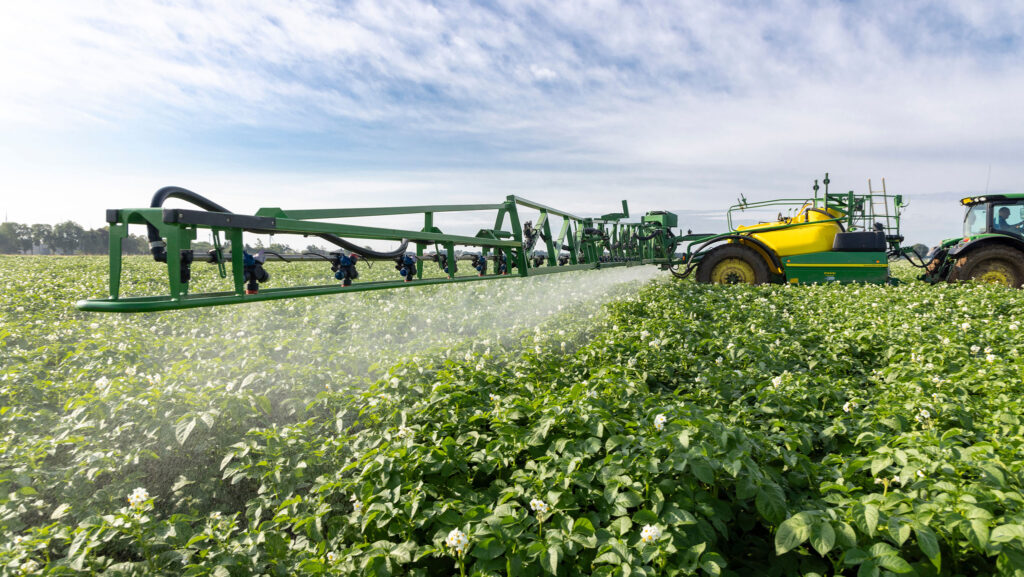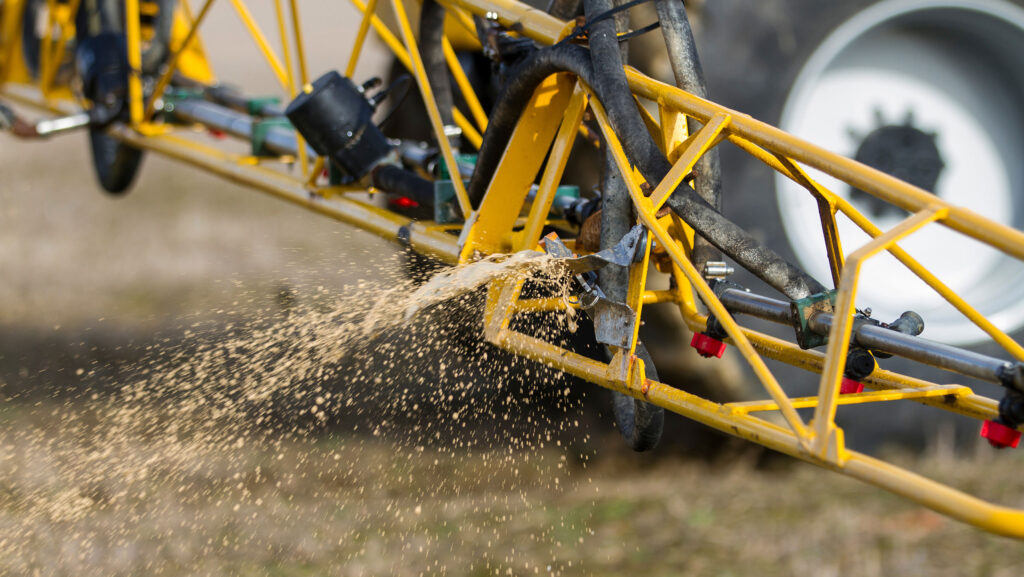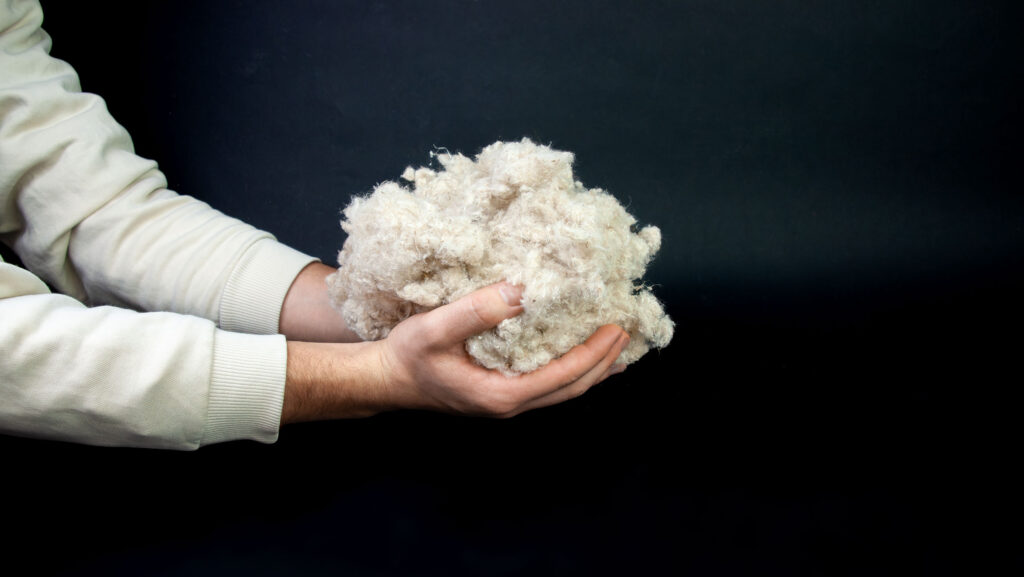Potato growing innovations to cut inputs and carbon footprint
 © Gary Naylor Photography
© Gary Naylor Photography With intensive soil cultivations and high levels of inputs often required to produce commercial crops, there was plenty of innovation on display at a recent two-day potato event in Lincolnshire to help minimise soil movement, reduce costs, and measure emissions.
In the Transformative Reduced Input Potatoes (Trip) programme trial plots, project partners revealed how varietal development, integrated pest management (IPM), reduced fertiliser use techniques and soil preparation could all be used to improve the environmental credentials of potato production.
See also: How winter cover crops affect soil nitrogen supply
“There are different ways of reducing inputs in the potato crop,” said Dr Christine Jones of Dyson Research, one of the Trip project partners.
“While individual practices can result in change, our task is to get them working together to shift the system to low input and low disturbance.
“We want to show that it’s possible to produce potatoes in a reduced-input system.”
Part of Christine’s work is looking at the use of plants and chemical attractants to get hoverflies into crops, providing biocontrol of aphids.
“We are using floral tramlines on the farm here to increase beneficial numbers, but it may be more practical to use chemical attractants. So we’re investigating which is the most attractive to hoverflies.”
When it comes to fungicide use, late blight-resistant varieties are being bred at Bangor University, explained Dr Katherine Steele, with six promising lines being tested in Lincolnshire.
“Most of them are standing up well and producing what we expected,” she reported. “They have been bred from existing Sarpo varieties, which are known for their late blight resistance, so fungicide use can be much lower.”
Elsewhere, in-field greenhouse gas monitors are measuring nitrous oxide emissions from the soil after nitrogen applications, so that fertiliser use can be fine-tuned to avoid flux events and to give a better understanding of what’s happening in the soil.
As Richard Peene of Light Science Technology explained, measuring the emissions from different soil types and various nitrogen amounts will show what contribution lower-input regimes make to greenhouse gas emissions.
“Growers need to be able to reduce the intensity of cultivations and the amount of fertiliser to reduce emissions and hit some of the targets they have been set, while still producing a profitable crop,” he said.
“These sensors will help to provide some of the data required for that decision-making.”
Other parts of the Trip project include foliar applications to reduce soil-applied phosphate and nitrogen, the role of mulches in a min-till system, the use of soil microbes and biostimulants at planting and ways of reaching net zero.
The project has one more year to run.
Net-zero potatoes – what’s possible?

© Gary Naylor Photography
The growing and storing of potatoes accounts for about one quarter of the greenhouse gas emissions that the potato supply chain is responsible for, said Mark Willcox, agronomy director of Branston.
With a potato crop typically having a carbon footprint of 82kg carbon dioxide equivalents/t product (CO2e), it is possible for growers to halve that by making changes to farm practices while maintaining performance, he suggested.
“We know that fertiliser, cold storage and fuel are all big contributors to that figure. So incorporating low-carbon fertilisers into the system, using low-energy cold storage and fossil fuel alternatives can have a significant effect.”
Together, these three changes reduce the total figure by 42kg/t CO2e. “That’s more than halfway, so there’s good reason for optimism when we’re contemplating net-zero potatoes.”
Other approaches that Branston is investigating include low nitrogen varieties, reduced cultivations, new fuels, in-field removals and precision breeding, revealed Mark.
“Inroads are being made all the time. Some of these innovations have been in trials with us for a long time, others are in their early stages and are confidential. But they all have potential.
“A low-energy cold store, for example, which uses new innovation and solar power, has shown to be 50% better in terms of emissions.”
In the wider potato supply chain, transport, haulage and packaging are all greenhouse gas contributors too – with refrigeration and on-site fuel/energy use at the Branston facilities also being tackled by the company.
“We’re in this together,” he stressed. “We all need to get on it now and work collaboratively to get the change that’s required. I don’t know if the supply chain can reach net zero, but I’m optimistic.”
At Branston, solar capability has been doubled, so that it’s now 30% of total energy use, he reported. “We’ve also worked with retailers so that finished goods don’t need to be chilled all year round – that’s reduced energy use for 7-8 months of the year.”
Fossil fuel alternatives for the company’s fleet are being investigated. Refrigeration gases are being replaced and targets for reducing emissions have been set and are monitored.
“We have one electric vehicle on trial, and we’re looking at biomethane as an interim step.”
Making clothes from potatoes

© Fibe
A sustainable yarn made from fibres extracted from potato harvest waste has been produced by London-based Fibe, which is a material science company with financial backing from Innovate UK and Patagonia.
With a patent-pending, non-polluting process that can take fibrous waste streams, such as potato haulm, and develop textile fibres, the company hopes to offer the fashion and textile industries an alternative fibre with better environmental credentials than cotton and polyester.
As David Prior Hope, co-founder of Fibe explained, raw materials which aren’t resource-intensive are in demand from the fashion brands, which have stringent sustainability targets.
“Compared to cotton, yarn extracted from potato haulm has the potential to use 99.7% less water, requires no additional land and produces 82% less carbon dioxide equivalents,” he revealed. “So there’s considerable interest in what we are doing.”
The fibres produced from potato haulm have a similar diameter to cotton and can be used in a variety of applications, from heavy canvas to a light, breathable fabric, he added.
With one commercial agreement signed, the company’s goal is to enter the market by 2026, using an untapped resource which currently has no economic value to the grower.
“The intention is to buy the potato haulm direct from farm, put it through our fibre-extraction technology and partner with fashion brands to offer them a climate-friendly alternative to their current choices.”
Dyson Farming

© Dyson Farming
Potato Days was hosted by Dyson Farming at Nocton, one of its two farms in Lincolnshire.
The company produces 15,000t of potatoes and is committed to a long-term, regenerative model that leaves a positive land legacy, said managing director Daniel Cross.
“That involves taking lots of steps in the right direction rather than adopting extremes,” he explained.
“Producing high-quality food with a lower impact is really important to the business and to wider society – we all know it’s the right thing to do.
“We are working constantly to grow crops with the lowest possible inputs. Of course, there’s a balance to be achieved so that yields and quality don’t suffer.”
Having a research arm helps the business to bring science to its decision-making and underpins its approach to all crops, he stressed.
“We assess techniques, products and approaches and then share our findings, so that we understand what needs to be done to make a difference.”

